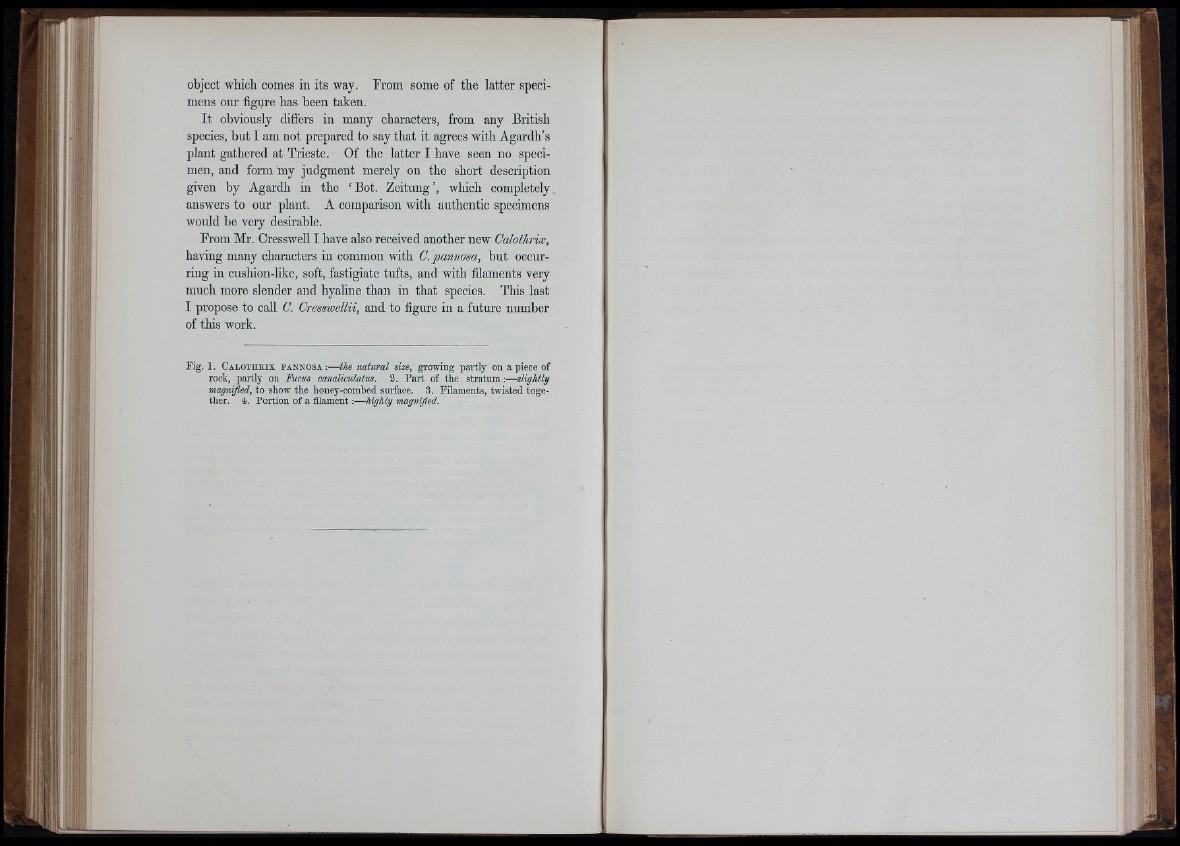
object wbicb comes in its way. From some of tbe latter specimens
our figure bas been taken.
It obviously differs in many characters, from any British
species, but I am not prepared to say that it agrees with Agardh’s
plant gathered at Trieste. Of the latter I have seen no specimen,
and form my judgment merely on tbe short description
given by Agardh in the ‘ Bot. Zeitung ’, which completely,
answers to our plant. A comparison witb authentic specimens
would be very desirable.
From Mr. Cresswell I have also received another new Calothrix,
having many characters in common with C. pannosa, but occurring
in cushion-like, soft, fastigiate tufts, and with filaments very
much more slender and hyaline than in that species. This last
I propose to call C. CressweUii, and to figure in a future number
of this work.
Fig. 1. Ca l o t h e ix p a n n o s a ;— the natural size, growing partly on a piece of
rock, partly on Fucus canaliculatus. 2. Part of the stratum :— slightly
magnified, to show the honey-combed surface. 3. Filaments, twisted together.
4. Portion of a filament:— highly magnified.